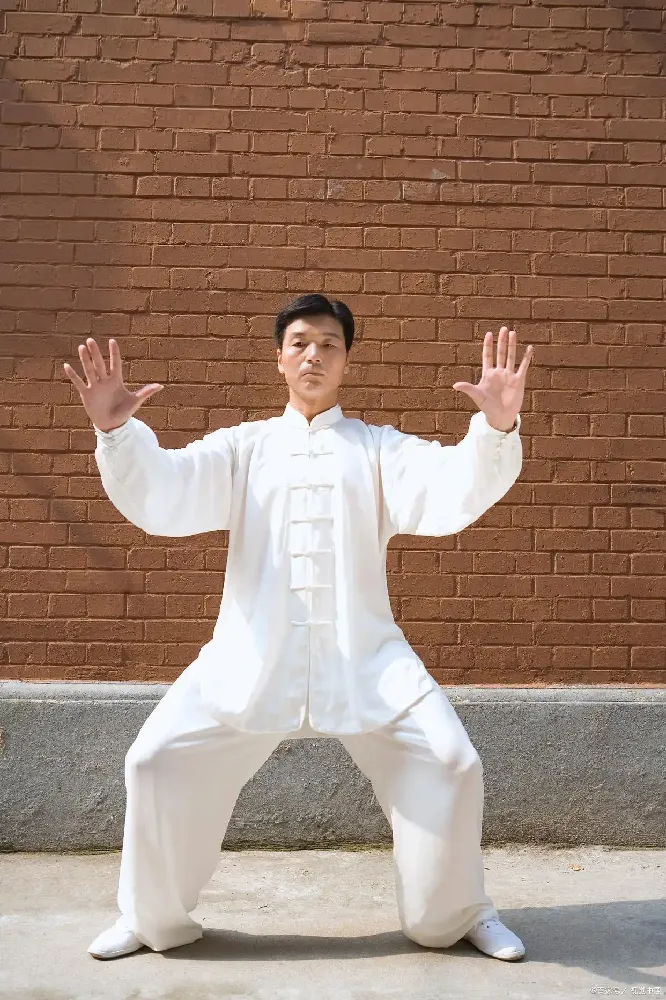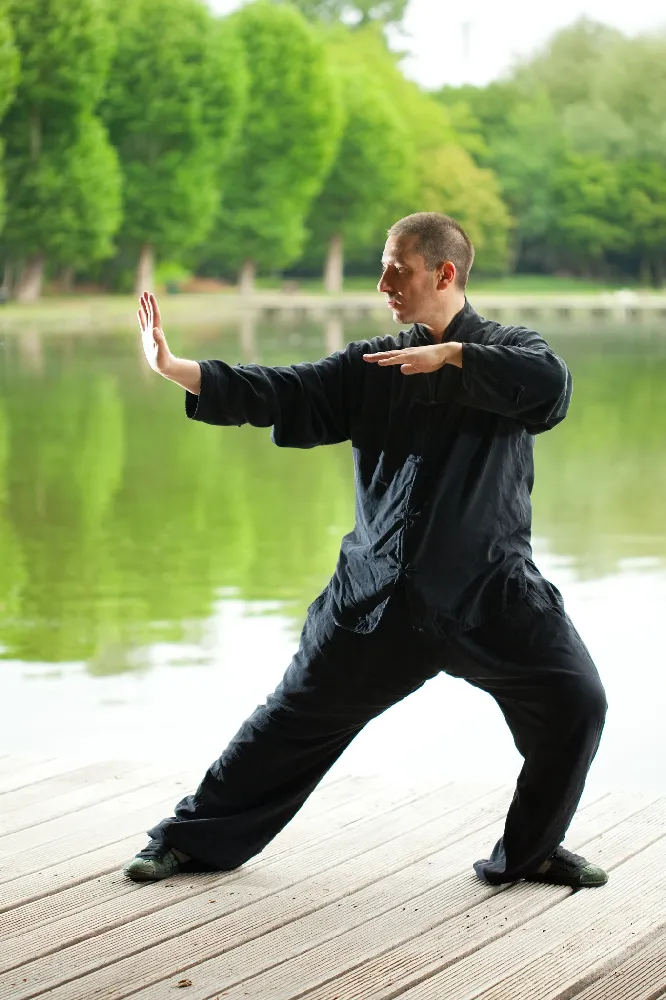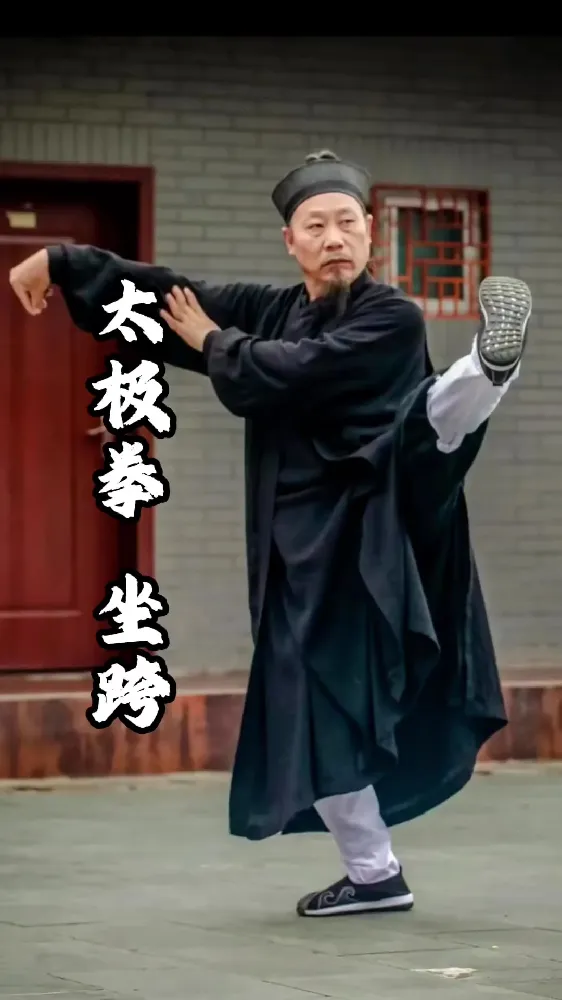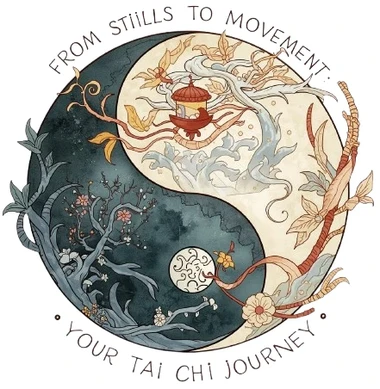Your shoulders are relaxed, your stance is low, but your movements still feel stiff and unrooted. The power from your legs gets stuck, never reaching your hands. The problem likely isn’t in your knees or your back—it’s in your Kua.
When I first heard teachers talk about “open kua tai chi,” I thought it was just another way of saying “stretch your hips.” I was wrong. The Kua is not a simple joint you can tug open with brute force. It’s a living hinge, a hidden bridge between upper and lower body. If it’s locked, your Tai Chi feels like pushing a car with the brakes on. If it’s open, suddenly everything flows—weight sinks, waist turns, and power spirals upward like water through a fountain.
This post is my attempt to unpack the mystery. I’ll explain what is kua in tai chi, why “rounding the crotch” matters, and how to practice without hurting your knees. Think of it as a friendly guide, not a lecture.
I’ll share what worked for me, what mistakes I made, and how you can avoid the same traps.

What Exactly Is the Kua?
Let’s start with clarity. Many students confuse the Kua vs hip joint issue. They think the kua is just the ball‑and‑socket where the femur meets the pelvis. That’s only part of the story.
- Anatomical location: The kua sits in the groin crease, where thigh meets torso. It involves not just bone but layers of muscles, tendons, and fascia.
- Functional role: The kua acts like a universal joint. It lets the legs fold, rotate, and sink while keeping the torso upright.
- Energy perspective: In Tai Chi, the kua is a gateway. It’s where force from the ground passes upward. If the gate is closed, energy stops. If it’s open, energy flows.
Here’s the tricky part: you can’t see the kua. You can only feel it. And that’s why so many people get lost.
The Idea of “Rounding the Crotch”
Teachers often say, “圆裆” or “round the crotch.” Sounds odd, right? But the image is powerful. Imagine holding a balloon between your thighs and lower belly. You don’t squeeze it. You gently expand around it. That’s the feeling.
- It’s not about squatting lower.
- It’s not about pushing knees outward.
- It’s about creating space inside the pelvis so the kua can fold and rotate freely.
When you achieve this, your stance feels alive. You’re not locked in a rigid pose. You’re sitting in the kua, springy and ready.
Exclusive tip: Try standing in Wuji posture. Place your hands lightly on your groin crease. Imagine the area melting like ice. Let the thighs roll slightly outward. If you feel your lower belly expand softly, you’re on the right track.

Why Opening the Kua Is the Foundation of Tai Chi
I’ll be blunt: if you don’t open the kua, you’ll never unlock Tai Chi’s real power. You can memorize forms, copy movements, even practice for years—but without kua, it’s all surface.
Here’s why:
- Bridge of power Force begins in the heel. It travels up the leg, through the kua, into the waist, and finally out the arms. If the kua is stiff, the chain breaks. You end up muscling with shoulders instead of channeling whole‑body power.
- The secret of sinking Many ask, how to sink in tai chi? The answer is: through the kua. When the kua opens, your body weight drops naturally into the feet. Without it, you hover. You look low, but you’re floating.
- Knee protection This one is personal. I once twisted my knee trying to turn without using the kua. Pain taught me fast. The knee is a hinge, not a swivel. Rotation must come from the kua. Learn this, and your knees will thank you.
- Source of spiral force Tai Chi is famous for silk‑reeling spirals. Guess where they start? In the kua. As one kua folds and the other expands, the waist turns, and the spiral is born.
Exclusive tip: Next time you practice “Brush Knee Twist Step,” focus on your kua, not your arms. Let the front kua fold as the rear kua opens. You’ll feel the movement transform.
Are You “Kua Tight”? Quick Self‑Tests
Most of us are tighter than we think. Here are three simple checks:
- Cloud Hands test: As you shift side to side, does your butt stick out? That’s a sign your kua isn’t folding.
- Brush Knee test: When you step forward, does your front knee feel jammed, unable to pass the toes? That’s kua stiffness.
- Parting Wild Horse’s Mane test: Do you rotate like a block of wood, with no waist‑hip separation? Again, kua is locked.
If you nodded yes to any of these, welcome to the club. Even experienced players struggle here. The good news: awareness is the first step.
Safe Ways to Open the Kua
Here’s where many go wrong. They think “open” means “stretch hard.” They force legs wide, push knees down, or bounce in deep squats. That’s a recipe for injury.
The real principle: gentle, continuous, mindful. Think of oiling a rusty hinge, not breaking it open.
Four Progressive Drills
- Wuji standing awareness Stand naturally. Focus on the kua. Imagine it softening, melting, expanding sideways. Don’t move much. Just feel.
- Bow stance shifting Step into a light bow stance. Slowly shift weight forward and back. Notice how the kua folds and unfolds. Keep movements small.
- Knee circles Feet shoulder‑width. Knees bent slightly. Hands on knees. Draw circles with knees, both directions. Feel the kua loosen.
- Butterfly stretch with intent Sit with soles together. Keep spine tall. Instead of forcing knees down, imagine the kua opening like a flower.
Exclusive tip: In every drill, breathe into the lower belly. Let the breath guide the kua. If you feel pain, stop. Discomfort is okay, sharp pain is not.
Bringing Kua Awareness Into Form Practice
Drills are great, but the real test is in your form. Let’s take “Grasp the Bird’s Tail” as an example:
- Peng (Ward Off): Right kua sinks inward, creating a buoyant spring.
- Lu (Rollback): Left kua folds, guiding the waist to turn.
- Ji (Press): Front kua pushes forward, rear kua supports.
- An (Push): Both kua sink, rooting power into the ground.
The key question to ask yourself in every move: Is my kua open? If yes, the movement feels smooth and connected. If no, it feels forced.
Exclusive tip: Record yourself. Watch the hips. If they look stiff while the arms wave, you’re missing the kua. If the hips glide and fold, you’re on track.
Common Kua Mistakes to Avoid
Let’s clear up some myths.
- Mistake 1: Twisting knees instead of kua This leads to injury. Remember, knees hinge, kua rotates.
- Mistake 2: Forcing legs wide Splits don’t equal open kua. Over‑spreading makes thighs tense and center unstable.
- Mistake 3: Rushing progress You can’t “hack” the kua in a week. It opens slowly, like seasons changing.
Exclusive tip: Treat kua training like brushing teeth. Small, daily, consistent. Five minutes a day beats one painful hour once a week.
A Note on Ting Jin in the Kua
Advanced players talk about ting jin kua—the ability to “listen” with the kua. It means sensing weight shifts, partner’s force, even subtle changes in balance. You can’t develop this sensitivity if the kua is locked. Only when it’s open and relaxed can it “hear.”
Think of it like tuning a radio. A stiff kua is static. An open kua picks up the signal.
Integrating Kua Work Into Daily Life
Here’s the truth: you don’t need a training hall to practice. The kua is with you every step, literally. If you only work on it during form practice, progress will be slow. But if you weave it into daily life, it becomes second nature.
- Walking practice: As you walk, notice how each kua folds and opens. Don’t just swing legs. Feel the groin crease soften with every step.
- Sitting down: Instead of collapsing into a chair, lower yourself by folding the kua. Imagine you’re still in Tai Chi stance.
- Standing in line: Waiting at the store? Relax the kua, round the crotch, sink weight. Nobody will notice, but you’ll be training.
Exclusive tip: Try brushing your teeth while sitting lightly in the kua. It sounds silly, but it builds endurance and awareness without stealing extra time.
The Emotional Side of Opening the Kua
This might surprise you: kua work isn’t just physical. It touches emotions too. When the kua is tight, people often feel blocked, anxious, or restless. When it opens, there’s a sense of release, even relief.
I’ve had students tell me they suddenly felt calmer, more grounded, even more patient with family. That’s not magic. It’s physiology. The pelvis is a hub of nerves and fascia. When it relaxes, the whole nervous system downshifts.
So if you find yourself frustrated, remember: it’s normal. The kua holds tension from years of sitting, stress, and habit. Opening it is like unpacking old boxes in the attic. Sometimes you find dust, sometimes treasure.
How Long Does It Take?
Here’s the question everyone asks: How long until my kua opens?
I wish I could give a neat number. Six weeks. Three months. But the truth is, it depends. Some feel changes in days. For others, it takes years.
Think of it like gardening. You can’t force a seed to sprout by yelling at it. You water, you wait, you trust. The kua is the same. Gentle, steady practice brings results. Impatience brings injury.
Exclusive tip: Track progress not by flexibility but by feeling. Ask: Do I sink easier? Do my knees hurt less? Do movements feel smoother? Those are the real milestones.

Advanced Layer: Sitting in the Kua
Once you’ve built some awareness, you’ll hear teachers say, “Sit in the kua.” What does that mean?
It’s not about dropping weight like a sack of rice. It’s about letting the pelvis cradle your torso while the kua folds naturally. Imagine sitting on an invisible stool inside your hips.
- Weight drops through kua, not knees.
- Spine stays tall, not hunched.
- Thighs feel supported, not strained.
When you get it, you’ll feel both heavy and light. Heavy in the feet, light in the torso. That paradox is the essence of Tai Chi.
Partner Work: Testing the Kua
Solo practice is vital, but partner drills reveal the truth.
- Push hands sensitivity: If your kua is closed, you’ll resist with arms. If it’s open, you’ll absorb through hips and redirect.
- Root testing: Have a partner press your shoulders. If you collapse, kua is closed. If you sink and stay stable, kua is working.
Exclusive tip: Don’t chase victory in push hands. Use it as a mirror. Every time you lose balance, ask: was my kua open?
Common Misunderstandings About Kua
Let’s bust a few myths I hear all the time:
- “Open kua means wide stance.” Wrong. You can have a narrow stance and open kua, or a wide stance and closed kua. It’s about inner space, not outer distance.
- “Stretch harder, open faster.” Wrong again. Forcing only tightens muscles. Opening comes from relaxation, not aggression.
- “Only flexible people can open kua.” Nope. I’ve seen stiff beginners make huge progress. It’s about awareness, not circus flexibility.
Exclusive tip: If you ever feel pain in knees or lower back, stop. That’s a sign you’re compensating instead of opening kua.
Why Kua Training Protects the Knees
I want to emphasize this because knee pain is epidemic in Tai Chi circles. Students blame low stances or age. But often, the culprit is kua neglect.
- Closed kua = knees twist.
- Open kua = knees track safely.
Think of the kua as a steering wheel. If it doesn’t turn, the wheels (knees) grind sideways. If it turns smoothly, the wheels roll straight.
I’ve had students in their 70s reverse chronic knee pain simply by learning to fold kua. That’s how powerful it is.
The Spiral Secret: Kua as the Engine of Silk Reeling
Silk reeling, or chan si jin, is the DNA of Tai Chi. Without it, movements are flat. With it, they’re alive. And the kua is the engine.
Here’s how it works:
- One kua folds inward, the other expands outward.
- The waist follows, creating a spiral.
- The spiral travels up spine, out arms, into hands.
It’s like wringing a towel. The twist starts at the base, not the fingers.
Exclusive tip: Practice standing with feet shoulder‑width. Slowly rotate pelvis left and right, letting kua lead. Keep shoulders relaxed. Feel the spiral climb upward. That’s silk reeling at its root.
A Day in the Life of Kua Training
Let me paint a picture.
Morning: I stand in Wuji for five minutes, melting kua. Afternoon: While waiting for coffee, I shift weight side to side, folding kua. Evening: During form practice, I ask, “Is my kua open?” every move. Night: Sitting on the floor, I do butterfly stretch, breathing into kua.
None of these are dramatic. But together, they add up. Over months, kua softens. Over years, it transforms.
That’s the path. Not fireworks, but steady rain nourishing roots.
Encouragement for the Stuck
If you’re reading this and thinking, I’ve tried, but my kua won’t open, let me reassure you. Everyone feels that way at some point. I did too.
The breakthrough often comes quietly. One day, you notice your stance feels deeper without effort. Or your partner can’t uproot you as easily. That’s kua whispering, “I’m opening.”
Don’t chase it. Invite it. Like a shy guest, it arrives when the atmosphere is warm, not when you demand.
From Stiffness to Flow: The Transformation of the Kua
When the kua finally opens, something magical happens. Movements that once felt like hard work suddenly feel effortless. Your body becomes like water flowing downhill—no resistance, no blockage.
- Root deepens: You feel heavier in the feet, lighter in the chest.
- Waist turns freely: Instead of dragging shoulders, the waist leads with grace.
- Arms connect: No more disconnected waving. Every gesture is powered from the ground.
It’s not just technique. It’s a shift in how you inhabit your body. You stop “doing Tai Chi” and start “being Tai Chi.”
Common Kua Pitfalls and How to Avoid Them
Even advanced practitioners stumble here. Let’s recap the traps:
- Knee twisting instead of hip folding This is the fastest road to injury. Always check: is the rotation coming from kua, not knee?
- Over‑splitting the stance Wide legs don’t equal open kua. They often create tension and floating balance.
- Chasing speed Opening kua is measured in months and years, not days. Impatience only stiffens the body.
Exclusive tip: Film yourself once a month. Compare. You’ll see subtle changes you can’t feel day to day. That’s proof of progress.
Why Kua Is the Hidden Key to Longevity in Tai Chi
Many people start Tai Chi for health. They want better balance, less pain, more calm. The kua is central to all of that.
- Balance: Open kua lowers center of gravity, making falls less likely.
- Joint health: Proper kua use spares knees and spine.
- Circulation: Relaxed pelvis improves blood and energy flow.
I’ve seen older students regain mobility they thought was gone forever. Not from fancy moves, but from patient kua work.
A Gentle Rebuttal to Misconceptions
Some say, “Kua training is too advanced for beginners.” I disagree. Beginners need it most. Without kua, they build bad habits that take years to undo.
Others say, “It’s just flexibility.” No—it’s awareness, coordination, and release. You don’t need to be a gymnast. You need to be attentive.
And some claim, “It’s mysterious, only masters understand.” That’s romantic but untrue. With clear guidance, anyone can feel kua opening. It’s not mystical. It’s physical.
Conclusion: Opening the Gate to Inner Power
Here’s the takeaway: open kua tai chi is not optional. It’s the physical core of everything—sinking, rooting, spiraling, protecting knees, even calming the mind.
When you unlock the kua, you unlock Tai Chi itself. Movements stop being stiff choreography and become living expression. You stop fighting your body and start flowing with it.
So next time you practice, ask the one question that matters: Is my kua open?
If the answer is yes, you’ll feel rooted, connected, alive. If not, don’t worry. Keep melting, folding, listening. The kua will open in its own time.
Warm Encouragement
Don’t let frustration stop you. Every master once struggled with tight kua. Every graceful movement you admire was built on years of patient opening. You’re walking the same path.
Remember: the kua is not a wall to break down. It’s a door to open gently. And behind that door lies the true art of Tai Chi.
Struggling to feel your kua? Our Foundation of Structure course in the Taichi Academy offers step‑by‑step video drills and error corrections to guide you safely.
Download our FREE Kua Activation Checklist—a simple guide of key points to bring into your daily practice.
Final Word
Open the kua, and you open Tai Chi. You open balance, health, and inner strength. You open a way of moving—and living—that feels whole.
That’s the secret. That’s the gift. And it’s waiting for you.
FAQ: Opening the Kua in Tai Chi
What is the Kua in Tai Chi?
The Kua in Tai Chi refers to the complex area where the pelvis meets the upper thighs, including the hip joints, groin, and surrounding muscles. It’s not just the hip joint—it’s the entire gateway that connects upper and lower body.
Why is it important to open the Kua in Tai Chi?
To open Kua Tai Chi means to release tension in the hips so energy can flow smoothly from the feet through the waist to the hands. Without an open Kua, movements feel stiff, rooting is weak, and power gets stuck.
What does “rounding the crotch” mean in Tai Chi?
Rounding the crotch Tai Chi describes the feeling of gently expanding the groin area, as if holding a balloon between the thighs. It’s not about squatting lower, but creating an inner sense of roundness and support.
How does hip flexibility affect Tai Chi practice?
Tai Chi hip flexibility allows the body to sink, rotate, and spiral without strain. Flexible Kua joints protect the knees, improve balance, and make movements more fluid.
How do you sink in Tai Chi using the Kua?
How to sink in Tai Chi: release the pelvis and let the weight drop through the Kua into the feet. This creates rooting without collapsing the chest or forcing the knees.
What are good exercises for Tai Chi hip opening?
Popular Tai Chi for hip opening drills include: Wuji standing with awareness in the Kua. Bow stance weight shifts. Knee circles to loosen the groin. Butterfly stretch with relaxed intention.
What is Ting Jin in the Kua?
Ting Jin Kua means “listening energy” in the hips. It’s the ability to sense subtle shifts of weight and direction through the Kua, allowing smooth adjustments in push hands and forms.
What does sitting in the Kua feel like?
Sitting in the Kua feels like folding at the hips while keeping the spine upright. The weight passes through the Kua into the legs, creating stability without knee strain.
What’s the difference between the Kua and the hip joint?
Kua vs hip joint: the hip joint is a single ball‑and‑socket, while the Kua includes the entire pelvic‑groin region. Tai Chi emphasizes the Kua because it integrates multiple joints and muscles for whole‑body movement.
What are common mistakes when opening the Kua?
Common Kua mistakes include: Twisting from the knees instead of the hips. Forcing legs too wide. Aggressive stretching that strains ligaments. Ignoring inner awareness (no Ting Jin).
How long does it take to open the Kua?
Opening the Kua is gradual. Think in months or years, not days. With consistent practice, you’ll notice more sinking, smoother spirals, and stronger rooting over time.
